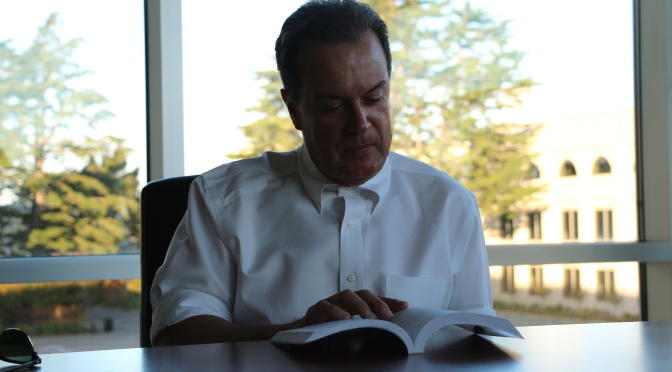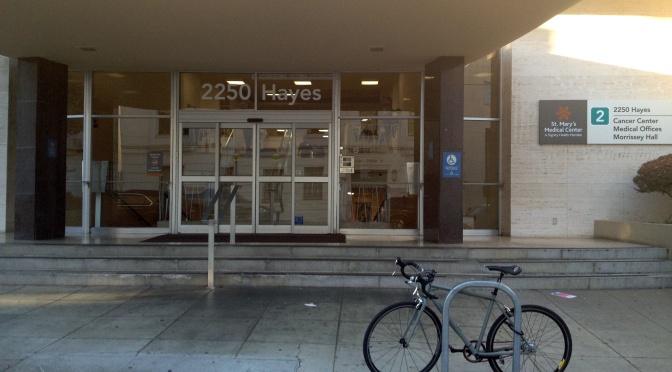Tanya Dzekon
Staff Writer
Ienna Dela Torre, a junior politics major, ended up in the Emergency Room last year with food poisoning and received a bill of about $2,000 — even though she was on the USF health care plan.
“Now I’m afraid of getting sick because I literally can’t afford to,” she said.
Dela Torre is planning to explore new options with the online health insurance marketplace that began enrollment on Oct. 1. The marketplace is part of provisions made under the Affordable Care Act (ACA), a law implementing universal health care for Americans.
All full-time USF students have a health care plan through their parents or the university, but the ACA, widely known as Obamacare, offers new health insurance options. The challenge presented is figuring out exactly what those options are. A Kaiser Family Foundation/ NBC survey about the new health care options found that almost half of respondents were “confused” by the law.
Under the ACA, California residents can use Covered California, a website where private health providers compete to provide coverage through a state-run marketplace. The website also provides a cost-assistance calculator, which helps determine whether an individual qualifies for subsidized health care on a sliding scale, with more financial support for those who earn less.
“The student health plan here is good, but not great. I’m hoping to find a plan with more coverage for about the same price as what I pay for USF, if not less,” said Dela Torre.
The USF-sponsored plan expands medical coverage under the Affordable Care Act
The ACA has raised the bar for health coverage, and USF Health Promotion Services (HPS) has made changes on the insurance plan they offer students. The benefits maximum has been raised from $100,000 to $500,000 to meet the requirements of the policy.
“I encourage students to compare the benefits and the prices,” said Femi Bamidele, assistant director at HPS, “so they can make an informed decision about whether they want to stick on the student health insurance plan or purchase a comparable plan on the marketplace.”
The Covered California marketplace offers different levels of health coverage — catastrophic, bronze, silver, gold, and platinum — and students wishing to opt-out of the student plan must purchase a level silver or higher through the exchanges.
According to HPS, 32% of USF students are enrolled in the university’s health plan.
The USF-sponsored plan expires on July 31 for students graduating in Spring, and on December 31 for those graduating in Fall.
Under the Affordable Care Act, the cut-off age for “children” is 26
Because of a 2010 ACA provsion, students can be added or kept on their parent’s insurance until the age of 26, if the plan covers children.
“I hope I’m not still using my father’s insurance that long,” said Meagan Cuthill, a senior media studies student, “but it’s a great back up if someone really does need that much time to figure out their finances.”
Leah Nadeau graduated with a media studies major in May 2013 and she is still covered on her parent’s insurance.“Until I get a job that does include benefits, it’s a good back up plan that I can turn to. I have a few health issues so being without health insurance isn’t an option.”
Nadeau added that she is worried employers are now less willing to hire full-time workers because they’ll be required to provide extensive coverage under the Affordable Care Act.
“I interviewed for a job in July that was only willing to hire me for part time because they didn’t want to provide benefits,” she said. “Basically, I would be working just under 2 hours a week of what would equate to full time work, just so the company could avoid giving me benefits.”
The ACA requires large employers (with 50 or more full-time workers) to offer health coverage to their full-time employees or pay a penalty.
The CEO of Trader Joe’s recently announced, through a company-
wide memo, that the company would stop offering health care coverage for workers who carry less than 30 hours because the company must offer more extensive coverage to full-time employees under the ACA. Trader Joes is offering part-time workers, who will be losing their health coverage, a check for $500 and guidance toward finding a new health plan under the ACA.
On July 2, the US Department of Treasury announced that it would provide an additional year before the mandatory employer requirements begin, under the title “Continuing to Implement the ACA in a Careful, Thoughtful Manner.” Employers have until January 1, 2015 to provide coverage for their full-time workers.
Media Coverage of the ACA hasn’t made it easier to decipher the 2,700 page piece of legislation
A Kaiser Family Foundation Health Tracking Poll conducted September 12-18 shows that only 6% of those polled said they think the news media’s coverage of the health care law is about how the law might impact people, while 56% said it was mostly about politics and controversies.
Generation Opportunity, an organization campaigning to get young people to “opt-out” of the ACA, put out an infamous advertisement they titled “Creepy Uncle Sam.” In the ad, an Uncle Sam puppet pops out from between a young girl’s legs during her visit to the gynecologist followed by the message, “don’t let the government play doctor.” Generation Opportunity encourages Americans to pay the $95 fee applied by the government if you don’t obtain coverage by March 1, 2014.
“The fine for not buying insurance is $95 or 1% of your income, whichever is higher. It could potentially be much higher than $95,” said Linda Leu, the California Policy and Research Director at Young Invincibles, an organization focused on representing the interests of 18-34 year-olds in the debate over health care reform. Leu added that the fine could be $95 the first year, but will increase exponentially the longer an individual remains uninsured.
If you need help figuring out your health plan, you can contact Covered California or schedule an insurance appointment with USF Health Promotion Services.



